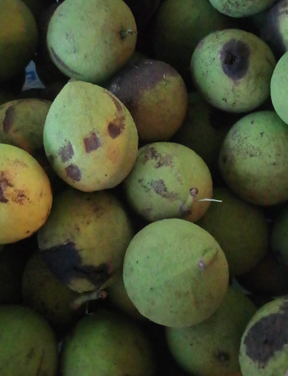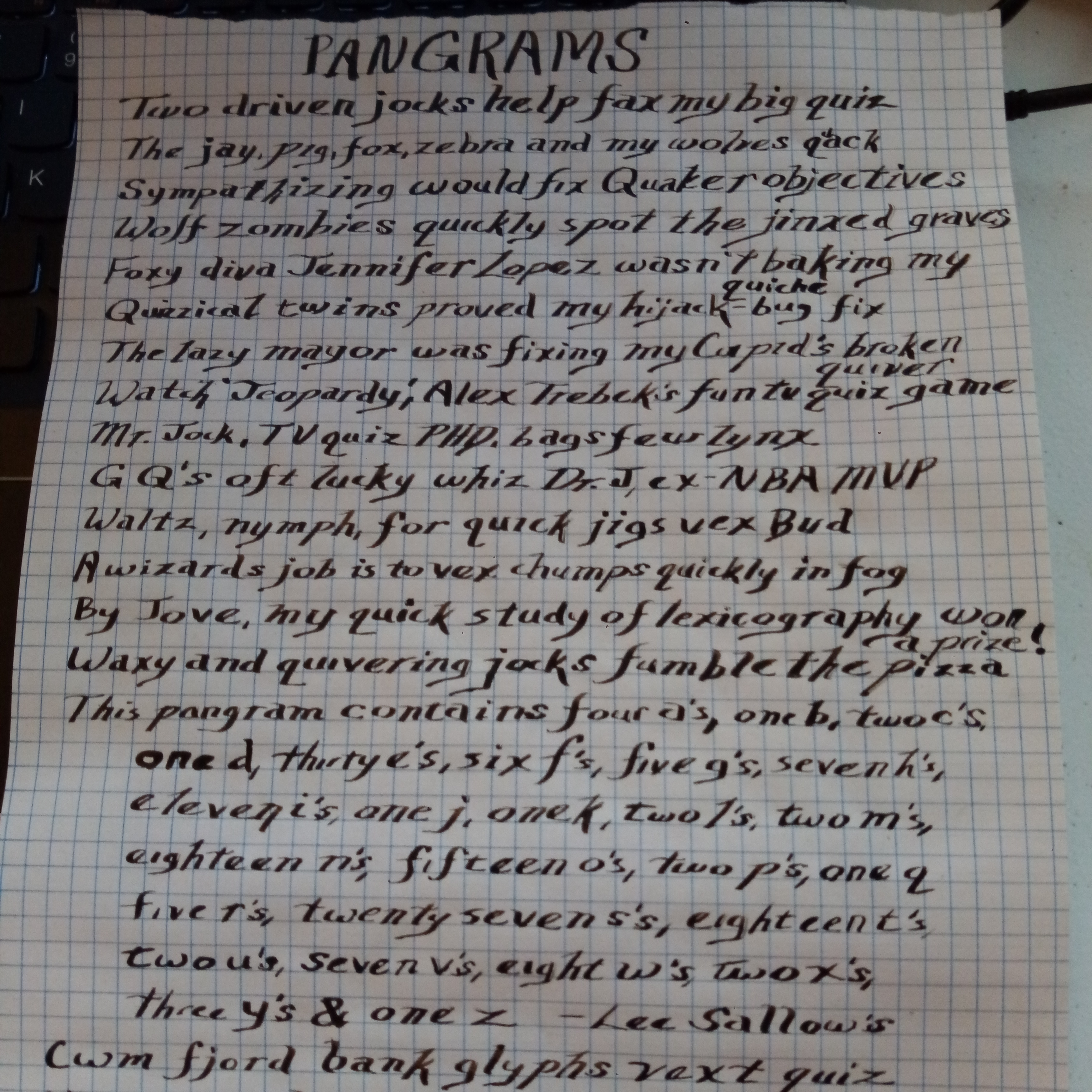Details: |
What materials were used in making this project?
Ink: Walnuts, tap water, rusty iron scraps. Hardware: Enameled pots, fire, stir stick, gloves, cloth and coffee filter strainers, more fire, funnel, paper towels, lidded glass jars. dip pen and paper.
|
What are the project's measurements?
Approx. 120 oz. of ink, including 16 oz of gelatinous blob.
|
What kind of construction methods or techniques were used?
Boiling. Lots of simmering. Some pouring. And finally dip pen testing on paper.
|
Was the project based on a specific time or culture?
The project was based on trying to replicate the brown ink effect of drawings by da Vinci and others.
|
Were any modern materials or methods used? If so, what led to that decision?
A propane tank burner and gas stove were used due to a lack of firewood or time for boiling with a wood fire. Modern hardware was used due to a lack of documentation and availability of more appropriate containers. Tap water was used instead of distilled water due to availability and the large quantity involved.
|
Was there a specific reaction or emotional response you wanted to cause in the viewer/audience? If so, how did you hope to achieve it?
No particular emotional response was anticipated.
|
Describe the process you went through in making the project.
Gathering more than 20 dozen walnuts took about twenty minutes of wandering around the yard. These sat on an enclosed back porch for about two weeks until we had a day to spend outside with the fire. Water was added every hour to keep the pot from boiling dry, and then left to cool before removing the nuts from the husks. The liquid was boiled for another hour or so with only the husks, two tablespoons of white vinegar and some rusty iron scraps, then cooled, strained, and reduced about two thirds until the dip pen test had a dark color for multiple test words. Strained and bottled in 16-24 oz jars. For the second batch, the same husks were left covered with water for a few days. Water and two cups of white vinegar was added and boiled with the husks for about four hours, strained, reduced by about two thirds, then bottled. After leaving it sit for a week without turning to jelly, one jar was divvied into smaller glass ink pots. The other jars are under observation.
|
What did you learn while working on this project?
Walnuts mold quickly in hot damp weather. Multiple websites reference 'snot in the jar' but no one seems to be sure of the cause or prevention, although adding copper might reduce the possibility of bacteria or fungal growth.
|
If you were to make this project again, what would you do differently?
Use distilled water and fewer nuts. Use larger straining clothes.
|
Were there any surprises?
Having a jar of liquid turn to jelly as I was using it to write with was quite a surprise.
|
Were there differences between what you set out to do and what you eventually did? How and why did the plan change?
Other than the gelatinous goo, everything went as expected.
|
What inspired you to create this project?
I have a walnut tree and a lot of scribal friends. Last year there was a squirrel that was bombarding our pell with walnuts (and hitting it), so this year I tried to leave the squirrels with a bit less ammunition.
|
How would you sum up this project and your experiences in making this?
This was a great Autumn Project while I have time to let things simmer for hours and hours outdoors, or with the windows open on several different days.
|
Links: |

After Art: “Comprehensive Guide to Walnut Ink”
http://artafter.blogspot.com/2015/12/walnut-ink.html
(Accessed September 2021)
|

Ashley Hackshaw aka Lil Blue Boo: How to Make, Bottle, and Label Your Own DIY Black Walnut Ink
https://www.lilblueboo.com/2017/09/how-to-make-bottle-and-label-your-own-diy-black-walnut-ink.html
(Accessed August 2021)
|

CAES Newswire: Your Black Walnut Tree Is Out to Get You
https://newswire.caes.uga.edu/story/3629/Killer-Tree.html
(Accessed August 2021)
|

Gardening Know How: Harvesting Black Walnut Trees: When Do Black Walnuts Fall
https://www.gardeningknowhow.com/edible/nut-trees/black-walnut/harvesting-black-walnuts.htm
(Accessed August 2021)
|

Hypotheses, The Recipes Project: “Clear as Crystal: Leonardo da Vinci’s Walnut Oil”
https://recipes.hypotheses.org/5806
(Accessed September 2021)
|

Muddy Colors: Making Walnut Ink
https://www.muddycolors.com/2016/12/making-walnut-ink/
(Accessed August 2021)
|

New World Encyclopedia: Ink
https://www.newworldencyclopedia.org/entry/Ink
(Accessed September 2021)
|

Villagers: Homemade Black Walnut Ink
https://forvillagers.com/blogs/villagers-blog/a-guide-to-making-black-walnut-ink
(Accessed August 2021)
|

You Grow Girl: Make Your Own Black Walnut Ink
http://yougrowgirl.com/make-black-walnut-ink/
(Accessed August 2021)
|
Sources: |
| - | Ralph Mayer, The Artist's Handbook of Materials and Techniques, New York: The Viking Press (1941), 16, 115-6, 501-2 |
|
Notes: |
| - | Cautions:
• Tree Nut allergen
• The fruit, leaves and roots of black walnut trees contain a chemical, juglone, that can injure other plants. Ingesting even a small amount of pure juglone can cause a serious poisoning effect in humans [Source: https://newswire.caes.uga.edu/story/3629/Killer-Tree.html (Accessed August 2021)]
• Gloves are recommended when harvesting or handling large quantities of the raw nuts to prevent staining your skin.
• Raw nuts will discolor clothes, so a separate basket or bag is recommended for gathering walnuts.
• Boil the raw nuts outside at least until the aromatics burn off. The smell indoors can be overpowering, although after several hours there is much less of a smell.
• Boil outdoors if there is any chance of spillover. The splashes will stain permeable materials. |
|





